
Yale
Hotel, 1300 Granville St
|
Yale
Hotel owner strikes heritage deal with city
Tentative agreement includes bonus density and the
retention of low-income housing
Glen
Korstrom
Business in Vancouver
January 22-28, 2008
Will Lin’s dream to replace Vancouver’s aging Cecil Hotel with
a 25-storey residential tower while upgrading the adjacent historic
Yale Hotel is inching closer to reality.
 The
Rize Alliance Properties owner, who bought the Yale Hotel for
approximately $10 million in mid-2006 and the Cecil Hotel for
“millions” of dollars soon afterward, has reached a tentative
agreement with City of Vancouver planners for his 20,000-square-foot
Granville Street site at the north end of the Granville Bridge. The
Rize Alliance Properties owner, who bought the Yale Hotel for
approximately $10 million in mid-2006 and the Cecil Hotel for
“millions” of dollars soon afterward, has reached a tentative
agreement with City of Vancouver planners for his 20,000-square-foot
Granville Street site at the north end of the Granville Bridge.
“The deal now is that we have a report to council as a major project
coming down the pike, and it’s going to be seeking council approval
soon,” said Lin. “There’s a heritage revitalization agreement
involved where we would upgrade and retain the Yale Hotel and
the commercial space, the Yale pub. It will be designated a heritage
building when completed.”
 Lin’s
tentative agreement with city staff requires that he retain and
upgrade 44 subsidized housing rooms at the Yale that have single-room
occupancy (SRO) zoning. Lin will give those rooms to the city
when his proposed project is complete. In exchange, he expects
the city to allow him to build a 165,000-square-foot tower. Current
density rules provide for a maximum 100,000-square-foot tower. Lin’s
tentative agreement with city staff requires that he retain and
upgrade 44 subsidized housing rooms at the Yale that have single-room
occupancy (SRO) zoning. Lin will give those rooms to the city
when his proposed project is complete. In exchange, he expects
the city to allow him to build a 165,000-square-foot tower. Current
density rules provide for a maximum 100,000-square-foot tower.
Lin presented his case to a City of Vancouver urban design panel
on December 19, and that panel urged Lin to redesign his tower
to be a taller and more slender 255 to 260 feet tall instead of
its originally proposed 225-foot height.
Lin must get city approval to change the site’s zoning from “downtown
district” to “comprehensive development.” He fears delays from
the city’s backlogged rezoning department could scuttle the project.
see
Cecil Hotel
|

|
|
Vancouver blues club
closes for $1.5M makeover
CBC News Nov 19, 2011
A Vancouver music institution is closing temporarily
for a major renovation that resulted from a unique development deal.
The 130-year-old Yale Hotel closes on Sunday night for a $1.5-million
makeover that’s scheduled to last for 18 months.
The heritage building at the corner of Granville and Drake was built
by Canadian Pacific Railway to house its single male workers. It
became a beer parlour and then a blues club in 1985, hosting local
and international acts.
Instead of selling the aging club, owner Waide Luciak and the developer
next door, Rize Property Alliance, struck a deal known as a density
exchange.
The developer bought the Yale and is paying for safety upgrades,
seismic upgrading, soundproofing and other necessary work. There
are plans for more windows facing the street, new floors and carpets
and a new stage.
When the renovations are complete, Rize will sell the club back
to Luciak for the original price. In exchange, the developer gets
to build its neighbouring condo development 10 stories higher.
"So it's a win-win where the people of Vancouver win. We get
to keep the old beautiful building forever, update it. And then
the music will stay in that we can then afford to stay,” said
Luciak.
Musician Tim Vaughn is pleased the Yale will get a new lease on
life: "It is the best blues bar in the country, bar none."

|

Image
source: City of Vancouver archives - Circa 1944
 |

VPL#39863. Granville
street during the construction of the Granville Street Bridge, 1954.
Note the old Yale neon sign.

|
|
 http://www.historicplaces.ca/ http://www.historicplaces.ca/
Description of Historic Place
The Yale Hotel is a three-storey Second Empire-style building, located
at the corner of Granville and Drake Streets. The building is located
at the north foot of the Granville Street Bridge at the entrance
of the Granville street commercial district, and is distinguished
by its bellcast mansard roof, gabled dormer windows, and round arched
windows.
Heritage
Value
The heritage value of the Yale Hotel lies in its historical, associative,
and architectural significance.
The Yale
Hotel is significant as one of the oldest surviving buildings in
Vancouver and for its association with the development of Yaletown.
Construction of the building began in 1888 and was completed in
1889. Constructed as the Colonial Hotel, it was among a very small
number of structures to be built on Granville Street during Vancouver's
formative years. Yaletown was the working class neighbourhood populated
by workers who moved to Vancouver in the 1880s to service and build
the Canadian Pacific Railway (CPR). The Colonial Hotel provided
low-priced accommodation for CPR workers and became known as the
centre of the notorious Yaletown nightlife. The hotel was also built
in association with the construction of the first Granville Street
Bridge in 1889, and served travellers between Vancouver and Richmond.
The associative
value of the Yale Hotel lies in its construction by its original
owner, real estate developer James Wellington Horne (1853-1923),
who owned more land in the downtown area than any single other person,
second only to the CPR. By 1890, only four years after his arrival
in Vancouver, Horne had built major brick blocks on most of Vancouver's
principal streets. Horne held public office in 1888-90 as a city
alderman, and from 1890 to 1894 held a seat in the provincial legislature.
The Yale
Hotel is additionally valued for its handsome Second Empire architecture,
designed by Noble Stonestreet Hoffar (1843-1907). One of Vancouver’s
first architects, Hoffar made a considerable contribution to the
evolution of the city between 1886 and the mid 1890s with his design
and construction of many of the city's largest and most substantial
structures. The Yale Hotel is a simplified example of Second Empire
architecture, which typifies the increasingly elaborate and monumental
appearance of architecture towards the end of the nineteenth century.
In Eastern Canada and the United States, the mansard roof was closely
associated with hotel accommodation; as Hoffar was American-born,
he would have been familiar with the popular styles in Eastern Canada
and the United States. The hotel is also associated with architect
W.T. Whiteway (1856-1940), who was commissioned to design the addition
to the east in 1909. Whiteway arrived in Vancouver at the time of
the Great Fire and worked in Vancouver from 1886-1887, then followed
other building booms in the United States and Canada before returning
to Vancouver, where he became one of the leading local architects.
Source:
City of Vancouver Heritage Conservation Program
Character-Defining
Elements
Key elements that define the Yale Hotel’s Second Empire architectural
design include its:
- construction
to the front and side property lines with no setback
- form, scale and massing, as expressed by its three-storey height,
cubic shape, and four-storey, irregular plan of the rear addition
- Second Empire style detailing, including its mansard roof with
a series of gabled dormers
- masonry construction of the original hotel, with a rubblestone
foundation and polychromatic red brick cladding with yellow brick
detailing (quoining, arched window crowns and patterned brickwork
around the entire building at the cornice)
- masonry construction of the rear addition, with a scored concrete
foundation and rough-dressed sandstone window sills
- regular and symmetrical fenestration of the original section,
with round-headed windows and projecting window hoods
- regular and asymmetrical fenestration of the rear addition, including
some original 1-over-1 double hung wooden sash windows and first
storey side elevation windows with transoms, and transoms over the
rear fire escape doors |
info
from the Yale's website, www.yalehotel.ca
The
Yale Hotel began
in the mid 1880's as a CPR bunkhouse where workers relaxed after
clearing land for the new community of Vancouver. On June 13, 1886
an unusually strong blast of wind set fire raging through the city.
In less than 45 minutes 1,000 wooden structures were destroyed.
The Yale, separated by bush from the main area of Vancouver, was
one of the few that survived.
Soon
after that dramatic event, the Yale became a popular gathering place
for the community. The building was refurbished and by 1889 was
renamed the Colonial Hotel. It served miners, loggers, fishermen
and CPR workers who trudged up an Indian trail in the woods from
False Creek. There was a stable below the street level for the occasional
carriage trade.
By
night, the hotel became a haunt for the workers and their friends.
Yaletown had a reputation for wild nightlife, and the activity at
the Colonial was supposedly the wildest. The hotel was named the
Yale again in 1911.
Meanwhile,
deep in the southern United States, the black culture gave birth
to the blues. Rhythm and blues is perceived in many ways. Sometimes
glamorous, sometimes heart-wrenching, the blues wound its way through
the history of America and emerged as a Canadian tradition at the
Yale.
Today,
after more than two decades of this tradition, the Yale is the focal
point for rhythm and blues in Western Canada. The icons of traditional
blues, as well as new talent, come by to play and jam. Pop stars
and screen personalities frequent the Yale to hear their R&B
idols. As well, the Yale recently built its own precision engineered
recording studio. In the basement, where stable boys used to groom
the horses, the Yale today records live performances to promote
up-and-coming local blues players and to raise funds for charities.
Hundreds
of legendary blues performers have graced the stage at the Yale.
Here is a small sample, selected by staff as their top twenty all-time
favourites:
John Lee Hooker, Clarence 'Gatemouth' Brown,
Shemekia, Jeff Healey, Jim Byrnes, Buddy Miles, Long John Baldry,
John Hammond, Pinetop Perkins, Gatemouth Brown, Powder Blues, Canned
Heat, Maria Muldour, James Cotton, Eddy Clearwater, Koko Taylor,
Charlie Musselwhite, Honeyboy Edwards, Chambers Brothers, Downchild
Blues Band
Some
other names of note who have played or jammed at the Yale:
John Candy, Supertramp, Jimmy Page, Tommy Chong, Colin James, Big
Brother and the Holding Company, George Thorogood, Lee Aaron, Jim
Belushi, John Savage, The Tea Party, Kenny Wayne Shepherd, Brian
Adams, Burton Cummings, Buckwheat Zydeco, Savoy Brown
And
then there's the stars who come by to hang out and listen:
Otis Rush, Amanda Marshall, Sheryl Crow, U2,
Glen Fry (Eagles), Steve Winwood, Paul Schaffer (Letterman), Patrick
Swayze, Rebecca De Mornay, Leonard Skynard Band |
|
|
All photos copyright ©
Christian Dahlberg except where stated otherwise. All rights reserved.
Vancouver panorama photo © Vancouver Lookout. www.vancouverlookout.com
|
|

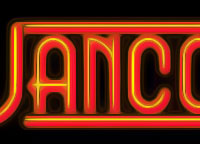
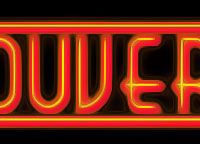
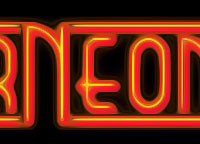

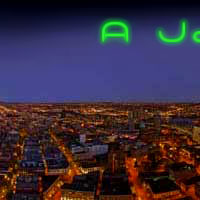
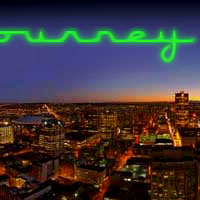
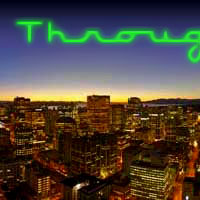
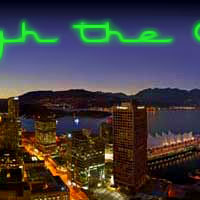
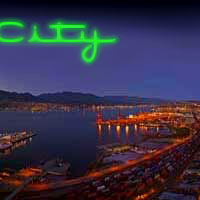


 The
Rize Alliance Properties owner, who bought the Yale Hotel for
approximately $10 million in mid-2006 and the Cecil Hotel for
“millions” of dollars soon afterward, has reached a tentative
agreement with City of Vancouver planners for his 20,000-square-foot
Granville Street site at the north end of the Granville Bridge.
The
Rize Alliance Properties owner, who bought the Yale Hotel for
approximately $10 million in mid-2006 and the Cecil Hotel for
“millions” of dollars soon afterward, has reached a tentative
agreement with City of Vancouver planners for his 20,000-square-foot
Granville Street site at the north end of the Granville Bridge. Lin’s
tentative agreement with city staff requires that he retain and
upgrade 44 subsidized housing rooms at the Yale that have single-room
occupancy (SRO) zoning. Lin will give those rooms to the city
when his proposed project is complete. In exchange, he expects
the city to allow him to build a 165,000-square-foot tower. Current
density rules provide for a maximum 100,000-square-foot tower.
Lin’s
tentative agreement with city staff requires that he retain and
upgrade 44 subsidized housing rooms at the Yale that have single-room
occupancy (SRO) zoning. Lin will give those rooms to the city
when his proposed project is complete. In exchange, he expects
the city to allow him to build a 165,000-square-foot tower. Current
density rules provide for a maximum 100,000-square-foot tower.


